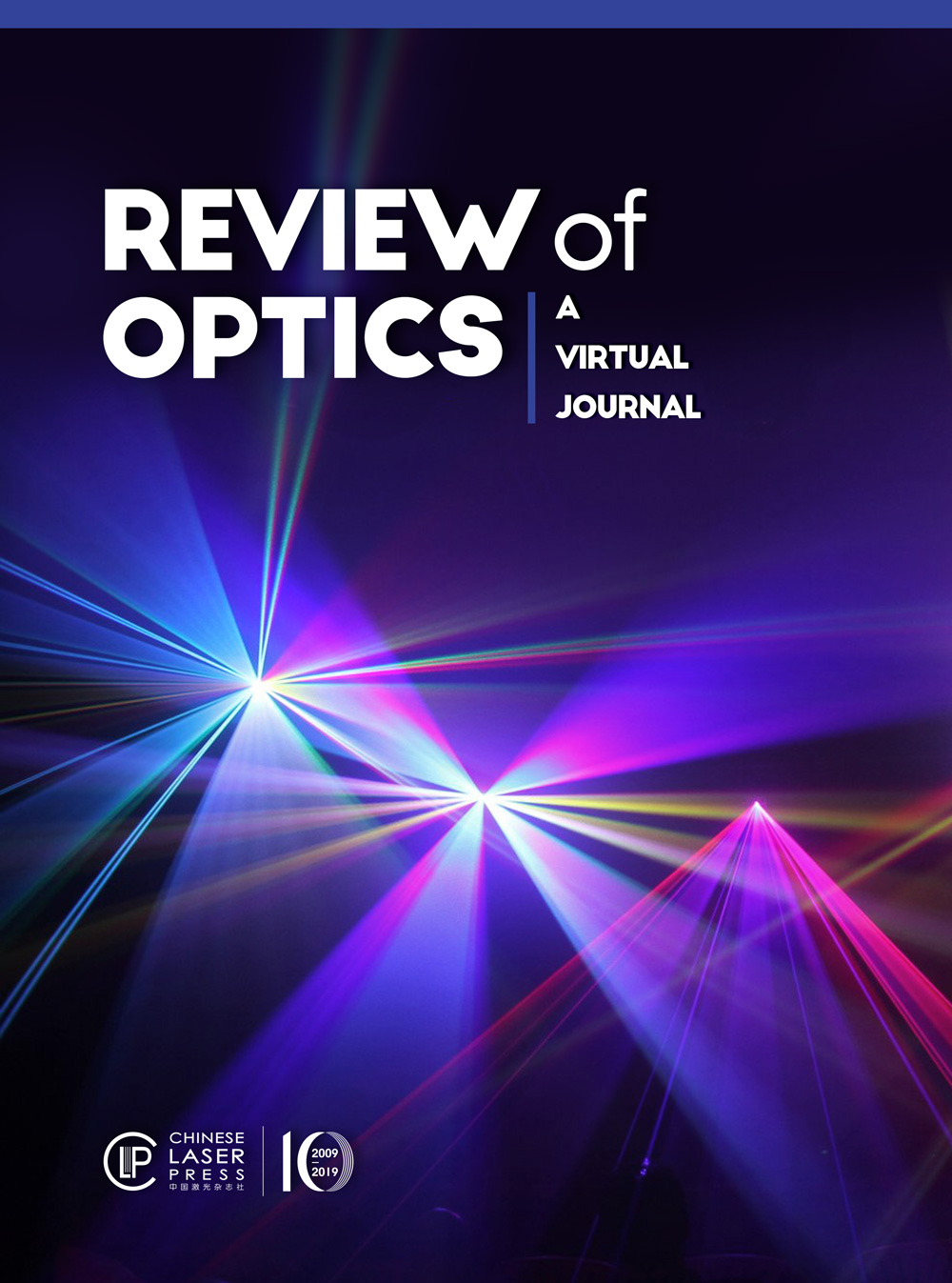Journals >Review of Optics: a virtual journal
- Publication Date: Nov. 10, 2021
- Vol. 19 Issue 11 111701 (2021)
- Publication Date: Dec. 10, 2021
- Vol. 19 Issue 12 123603 (2021)
- Publication Date: Nov. 10, 2021
- Vol. 19 Issue 11 111902 (2021)
- Publication Date: Oct. 10, 2021
- Vol. 19 Issue 10 102202 (2021)
- Publication Date: Sep. 13, 2021
- Vol. 3 Issue 5 054001 (2021)
Structured light with inhomogeneous phase, amplitude, and polarization spatial distributions that represent an infinite-dimensional space of eigenstates for light as the ideal carrier can provide a structured combination of photonic spin and orbital angular momentum (OAM). Photonic spin angular momentum (SAM) interactions with matter have long been studied, whereas the photonic OAM has only recently been discovered, receiving attention in the past three decades. Although controlling polarization (i.e., SAM) alone can provide useful information about the media with which the light interacts, light fields carrying both OAM and SAM may provide additional information, permitting new sensing mechanisms and light–matter interactions. We summarize recent developments in controlling photonic angular momentum (AM) using complex structured optical fields. Arbitrarily oriented photonic SAM and OAM states may be generated through careful engineering of the spatial and temporal structures of optical fields. Moreover, we discuss potential applications of specifically engineered photonic AM states in optical tweezers, directional coupling, and optical information transmission and processing.
Structured light with inhomogeneous phase, amplitude, and polarization spatial distributions that represent an infinite-dimensional space of eigenstates for light as the ideal carrier can provide a structured combination of photonic spin and orbital angular momentum (OAM). Photonic spin angular momentum (SAM) interactions with matter have long been studied, whereas the photonic OAM has only recently been discovered, receiving attention in the past three decades. Although controlling polarization (i.e., SAM) alone can provide useful information about the media with which the light interacts, light fields carrying both OAM and SAM may provide additional information, permitting new sensing mechanisms and light–matter interactions. We summarize recent developments in controlling photonic angular momentum (AM) using complex structured optical fields. Arbitrarily oriented photonic SAM and OAM states may be generated through careful engineering of the spatial and temporal structures of optical fields. Moreover, we discuss potential applications of specifically engineered photonic AM states in optical tweezers, directional coupling, and optical information transmission and processing.
.- Publication Date: Nov. 17, 2021
- Vol. 3 Issue 6 064001 (2021)












